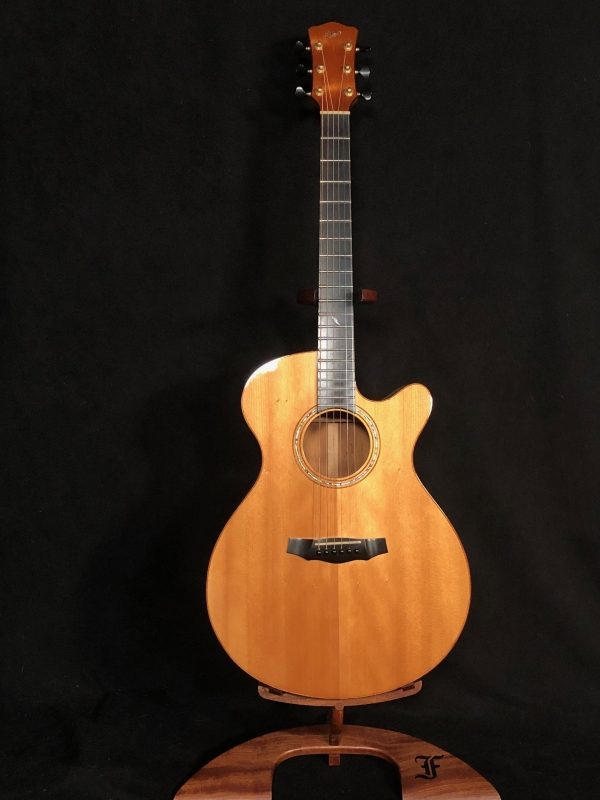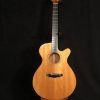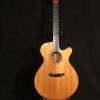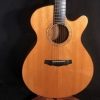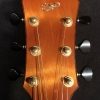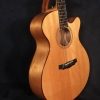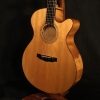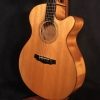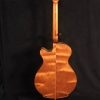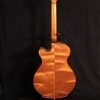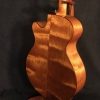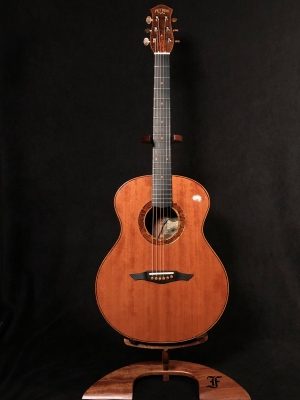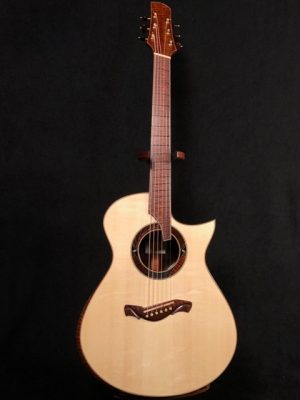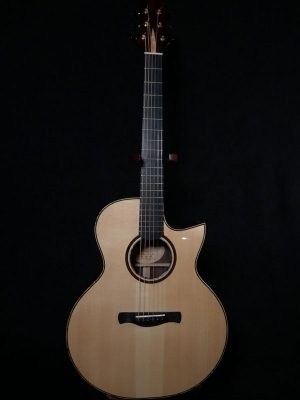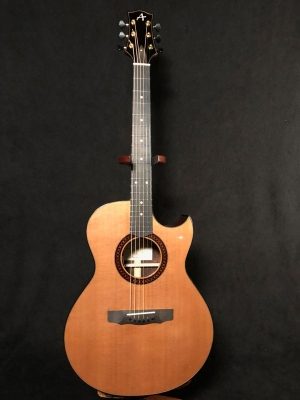Description
2005 Laurie Williams Tui Ancient Kauri
This is a near mint condition 2005 Tui model cutaway guitar by maker Laurie Williams in New Zealand. This guitar is built with Ancient Kauri wood that is estimated to be between 30,000- 50,000 years old. Laurie hand crafts gorgeous guitars with precise, soothing tone. He is among the very best craftsman and his instruments are sought after by connoisseurs of fine guitars.
This beautiful Williams guitar is built with exquisite Ancient Flamed Swamp Kauri back, sides, neck and overlay. This particular tree fell in a peat bog between 30,000-50,000 years ago. Due to the lack of oxygen in the bog, the wood was perfectly preserved for millenia. This is one of the rarest and oldest woods on earth. It has a beautiful natural golden hue with wonderful supple figuring throughout. The tree is estimated to be over 1,500 years old when it fell. It is a wonder to hold and play. To think this workable wood which has now been milled and built into an artisan instrument grew in The Later Stone Age is humbling.
Most materials used to build this guitar are woods native to New Zealand, from the Ancient Kauri to the Paua Abalone Pearl. The top is made from Waingarara Kauri, a species that only grows in New Zealand and cannot be exported or chopped down unless authorized by the government. Other features include Tulipwood backstrip and purfling, Madagascar Rosewood bindings, Ebony fretboard and bridge, Paua Pearl rosette and side dots, Gotoh gold 510 tuners with Ebony buttons, 1 3/4″ nut width and 2 1/4″ saddle spacing.
Laurie lives in the Paraoanui Valley in the Far North of New Zealand’s North Island. He has been building professionally since 1993 in a 1 man workshop, making all of his instruments individually. He has built hundreds of guitars since the early 90’s.
Part of what distinguishes Laurie from many of today’s top luthiers is the story of the building process itself. It is an immersive, hands-on style that has begun in the native forest in search of timber. The Documentary “Song of the Kauri” documents the pinnacle of his search for the Kauri tone wood he uses for his sound boards, but he has often
used, and continues to use, wind fallen trees or salvaged logs, the sinkers of previous generations

